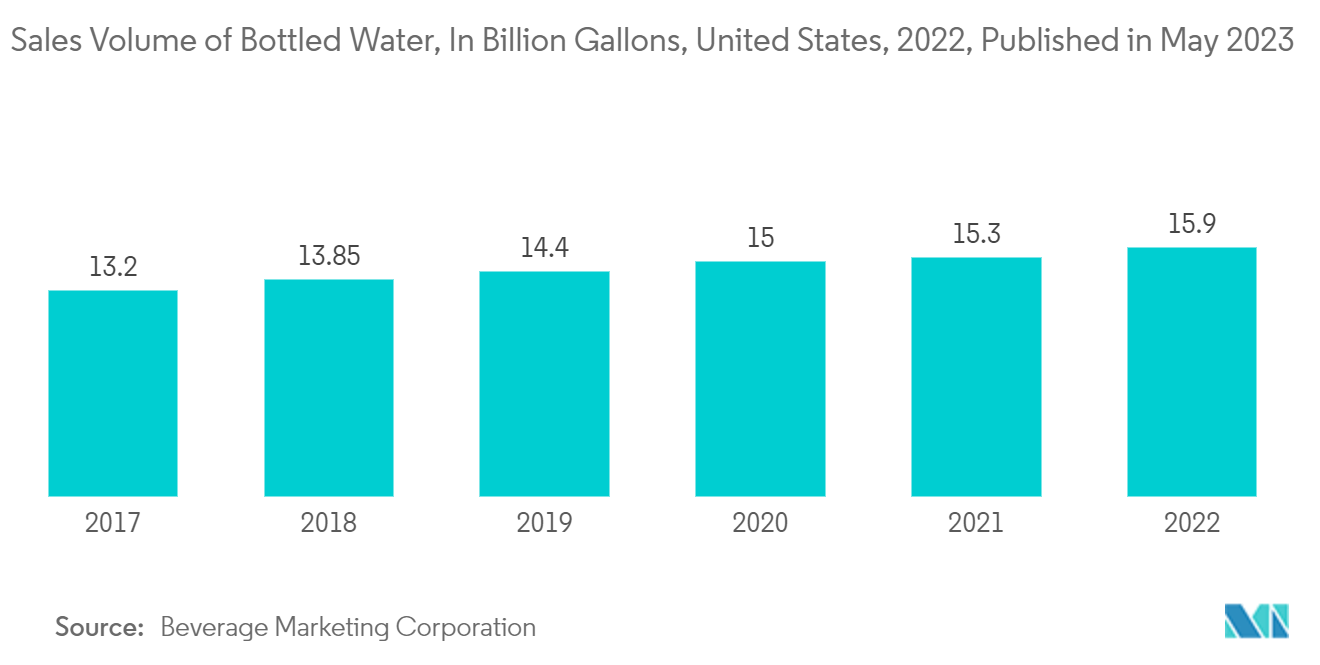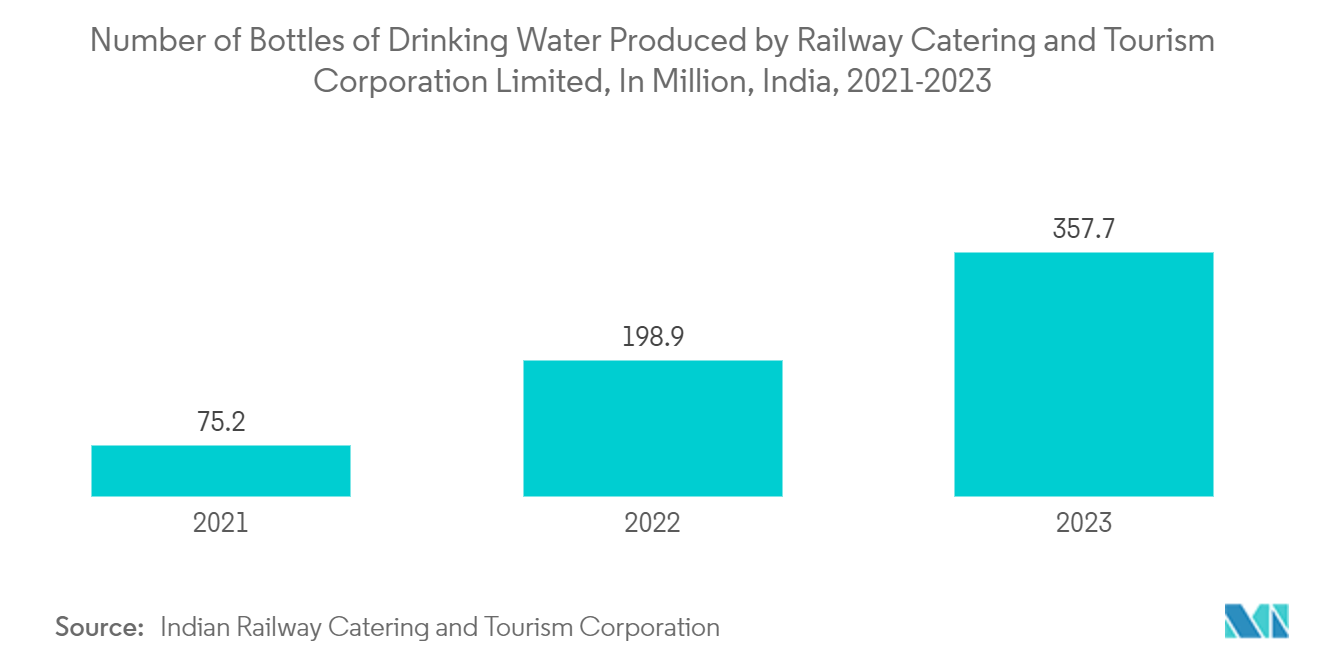Market Trends of Plastic Bottles Industry
The Beverages Segment is Expected to Drive the Market's Growth
- The beverage segment is anticipated to witness growth, owing to the never-ending demand for bottled water and non-alcoholic beverages. The demand for bottled water is credited to consumers' propensity for specifically demanding high-quality drinking water, owing to the fear of diseases as an aftermath of drinking polluted tap water and the ease of portability and convenience provided by bottled water.
- Further, in many developed and developing economies, people favor bottled water. Bottled water is sold in stores and places selling various drinks. For instance, the International Bottled Water Association (IBWA) stated that Americans favor bottled water over other packaged beverages.
- According to Beverage Marketing Corporation data published in May 2023, in 2022, the United States bottled water sales reached 15.9 billion gallons, marking a consistent annual increase over the past decade. With the rise in bottled water volume sales in recent years, the demand for plastic bottles surged nationwide.
- PET bottles are more prevalent in the water packaging market than glass and plastic bottles due to their durability and recyclability characteristics. The trend shows that lightweight, durable, and cost-effective PET is increasingly becoming the packaging medium of water.
- The consumption of water bottles is an increasing trend across China and India with the growing population and changing lifestyle, creating demand for different formats of bottles that are lightweight, easy to carry, and can be stored and fulfill all the regulation terms to cater to changing consumer trends toward sustainability.
- Companies also innovate different formats of bottled water, which are new in the market, and provide opportunities for the companies to promote the bottle with unique strategies to create market buzz.
- For instance, in India, Wahter introduced ISI-certified bottled water in December 2023, which can be branded by advertisers at the lowest cost, leveraging 80% of branding space where advertisers can set up an account for their brand, upload their design, and link it to the template of the label advertisers to tailor their marketing strategies to their target audience.

Asia-Pacific is Expected to Witness the Highest Growth
- One of the main initiatives across multiple countries in Asia-Pacific has generally been to cut down the usage of single-use plastic bottles and packaging. Companies might likely resort to plastic packaging to combat the pandemic's spread, putting the sustainability aspect away at this time.The healthcare and pharmaceutical sectors in China, India, and Japan are the world's largest markets, primarily driven by the aging population.
- According to the Organisation of Pharmaceutical Producers of India, the country's pharmaceutical market is expected to reach USD 450 billion by 2047, which is up from USD 49 billion in 2022. Hence, there is a possibility for growth for domestic players as they might experience an increase in demand for plastic bottles from these companies. The Indian plastic bottle market is estimated to grow steadily, owing to the continually increasing consumption and industrial applications of plastic-made bottles.
- Further, India is also one of the strong markets in the region with the highest population, and with a developing and trending outlook, there is a significant increase in the consumption of bottled water. Indian Railway Catering and Tourism Corporation Limited has launched a pet bottled water brand, "Rail Neer," which is majorly sold on trains and railway stations; with the rising consumption of water bottles and the growing railway sector, the corporation increased the production of the bottles in 2021 with 75.30 bottles produced which increased to 357.70 million bottles in 2023.
- PET bottles are more energy efficient than glass bottles while delivering 1000 gallons of soft drinks and contribute less solid waste by weight than glass and aluminum containers. Thus, companies are shifting to PET format for carbonated beverages and innovating bottles with recycled materials due to changing consumer preferences in the region.
- For instance, in Hong Kong, as part of its efforts to reduce its environmental footprint, the Coca-Cola Company announced the launch of 500 ml bottles made entirely from recycled plastic for its flagship drink, Coke, in April 2024. The global beverage company announced
that all 500 ml bottles of Coca-Cola Original, Coca-Cola No Sugar, and Coca-Cola Plus in production in China have shifted to 100% recycled polyethylene terephthalate (rPET).


